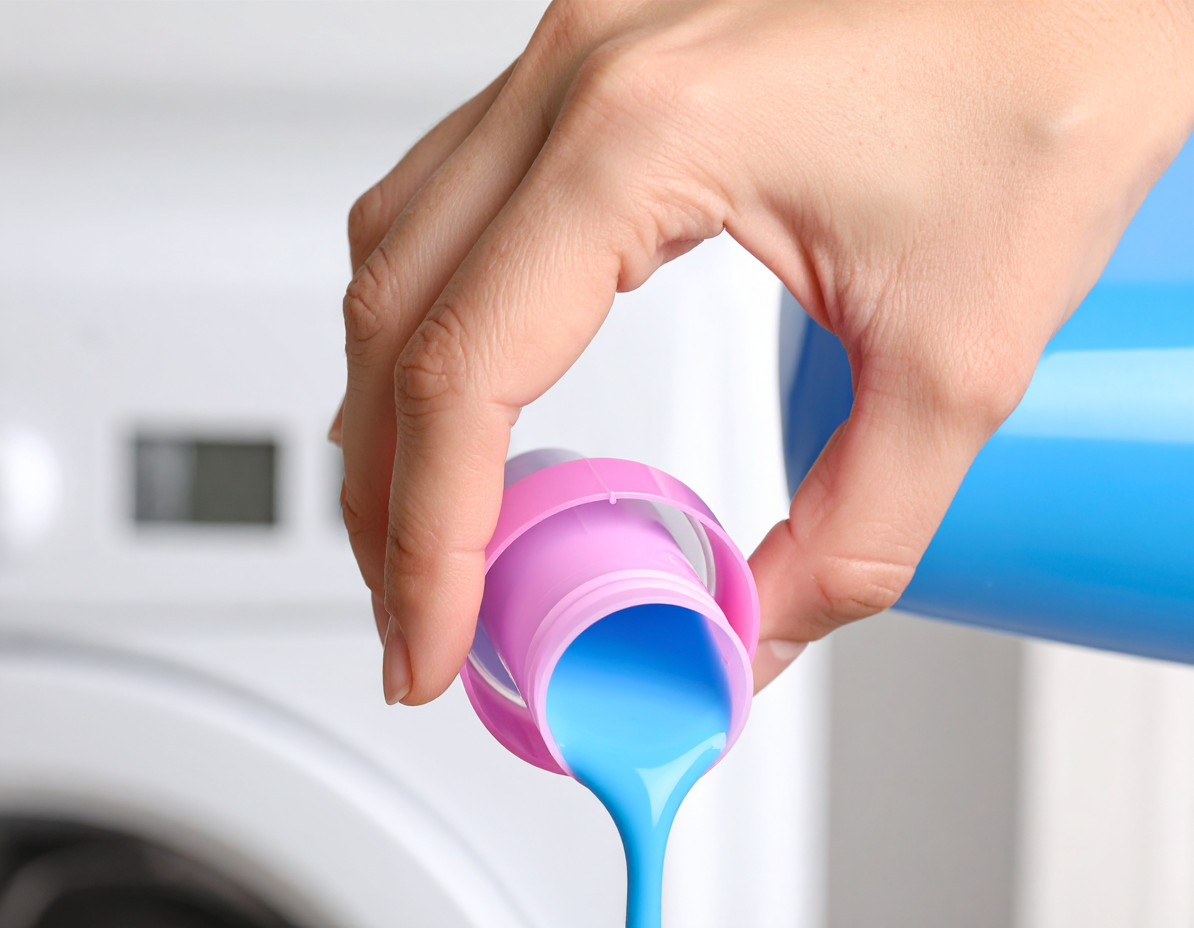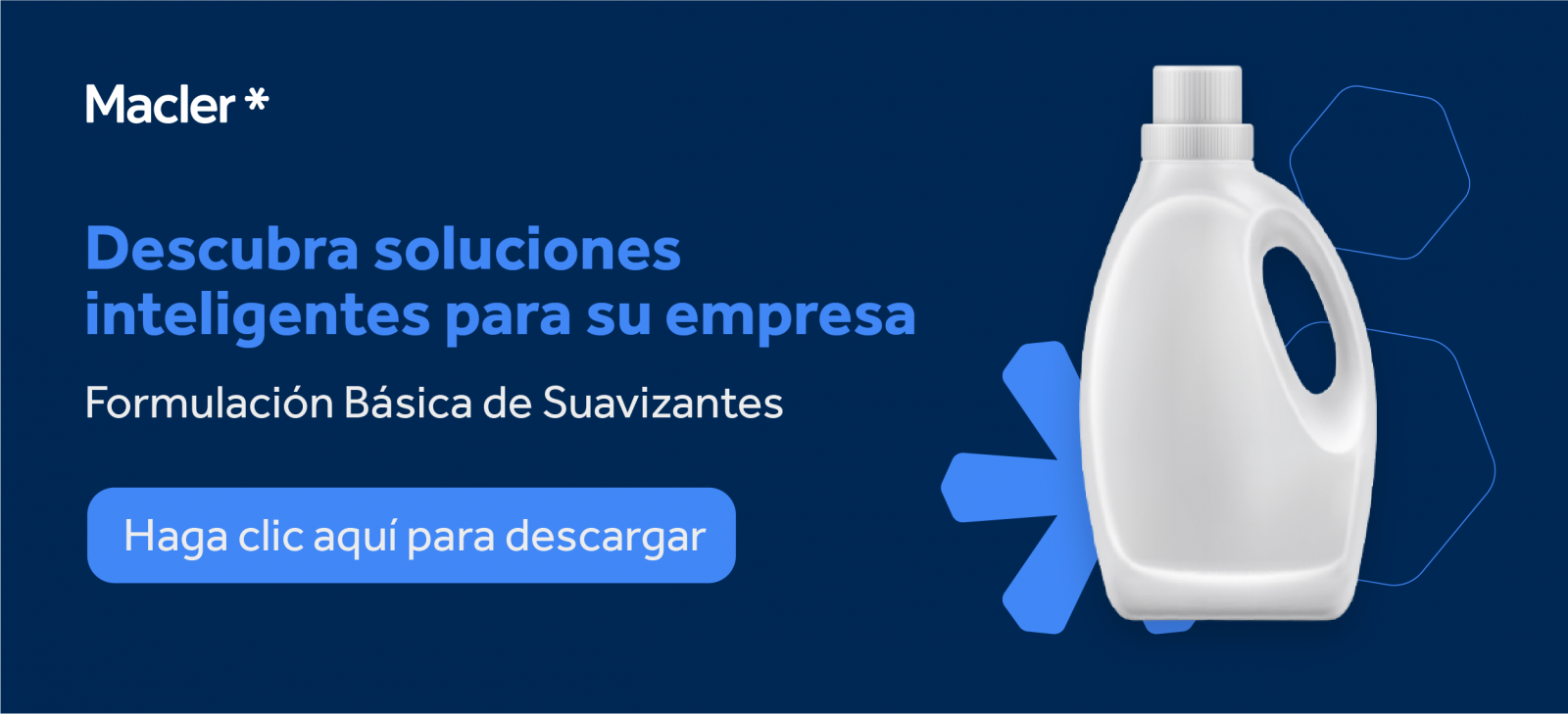Household softeners: best practices and strategies for high-performance formulations
Few products in the cleaning and home care segment have undergone as many transformations as fabric softeners. Technical and technological developments in recent years have ranged innovative formulation structures for viscosity gain to the use of microencapsulated fragrances and enzymes such as cellulases, which act on pilling control.
Despite these innovations, some fundamental premises remain valid for developing a good formulation. Before continuing, we also recommend consulting our article “How Fabric Softeners Work” for a deeper understanding of the technical function of these products.

Understanding consumer expectations
It is essential to recognise that consumer expectations are not always aligned with the technical purpose of fabric softener. In many markets, fragrance has more weight in the purchasing decision than the actual ability to soften fibres. This means that, to develop a competitive product, it is necessary to know the profile of the target consumer and closely observe what competitors are offering.
Therefore, it is worth highlighting some important technical aspects when developing a fabric softener:
Technical pillars in softener formulation
Perfume:
Delivering a striking olfactory experience is one of the biggest competitive differentiators in the fabric softener market. The product must maintain a noticeable fragrance throughout the entire process: during washing, drying, ironing, folding, and wearing clothes.
A premium product delivers a positive perfume experience at all these stages.
However, depending on the market in which you operate, a premium formulation will not deliver the cost required to remain competitive. That is why it is important to understand how to extract the highest performance at the lowest possible price. Since this is the main factor in choosing and repurchasing a product, those that perform best in this regard tend to be more successful with consumers.
To enhance the performance of the fragrance, it is necessary to:
- Use high-quality fragrances developed specifically for fabric softeners, free of glycols or emulsifiers.
- Invest in high-quality cationic agents that fix the fragrance to the textile fibre. Products with low active ingredient content or weak active ingredients (such as cetrimonium chloride or cetostearyl alcohol) tend not to retain the fragrance after rinsing.

Viscosity:
Although there has been a downward trend in fabric softener viscosity for some time now, driven by the concentrated formulations of major players in the domestic market, some markets, generally low-cost ones, still value viscosity, mistakenly associating this attribute with softener performance. In other words, they assume that because the product is more viscous, it is more concentrated.
Despite this fallacy, if this is something this consumer profile desires, it is important to consider this factor and deliver something as tailored as possible. It is very common to find formulations that overemphasize this aspect, but it ends up becoming a problem for the consumer, as the product becomes so viscous that:
- It takes a long time or does not even drain in the washing machine dispenser, and very little product ends up going into the water with the fabric softener, greatly reducing the performance of the fabric softener.
- It does not disperse properly in water, forming lumps that stick to clothes, causing stains and reducing the performance of the fabric softener, since all the active ingredients are concentrated and attached to certain parts of clothing.
- It needs to be diluted before use so that it becomes fluid and disperses in water, reducing the amount of active ingredient in the water, consequently reducing performance.
The ideal viscosity conveys a perception of quality; however, it allows easy flow and dispersion, as this is fundamental both for its functionality as a softener and also for the success of fragrance fixation in the fiber.
Many formulators search for thickening agents to meet this viscosity requirement, but it is important to note that some of them can compromise product performance. Among the most commonly used are cellulose-based thickeners, most commonly HEC (Hydroxyethyl Cellulose). However, this thickener also tends to adhere to fibers, causing clothing to stiffen and thus create a rough feel.
Be careful when choosing a thickener, when necessary. Some options can even help the active ingredient perform better, such as the NOXIPON TXT thickener, marketed by Macler. In addition to generating viscosity, it helps fix the active ingredient and fragrance to the fibre and increases the lubricity of the yarn.
.png)
Manipulating the rheological behavior of a formulation is an effective strategy for balancing perception and functionality. What does this mean?
This means it is possible to have a product that behaves like it has high viscosity in one condition, but this viscosity drops abruptly when subjected to another condition.
A prime example of this type of rheological behavior is the formulations made the ISOGEN TXT 200 fabric softener base developed and marketed by Macler. After more than five years of intensive research, Macler developed a fine-tuned combination of active ingredients that gave the product a high-viscosity appearance when sitting on the shelf, However, when subjected to drainage, the product drastically reduces its viscosity, flowing easily through the dispenser and dispersing quickly in the soaking clothes.

This characteristic, combined with an appropriate arrangement of surfactants, has allowed, in many cases, a reduction of up to 30% in the fragrance load without loss of performance, a significant saving, considering that fragrance is one of the most expensive ingredients in the formulation.
Other essential care in the formulation:
- Use of quality water: Hard water, high in calcium, magnesium, and/or iron, directly impacts product stability. These ions can disrupt the softener's micellar arrangement, causing phase separation. Furthermore, the presence of iron can react with dyes, fragrances, and preservatives, altering the color and causing odors.
- Suitable dye or pigment: If unsuitable dyes are used, there is a high risk of the fabric softener staining the clothes.
- pH should be adjusted to a more acidic range (3.0 – 5.0): Cationic surfactants gain greater cationic strength at acidic pHs, making them more substantive, meaning they adhere more easily to the fiber. Consequently, this allows the active ingredient to bind the fragrance, aiding in softness performance. Furthermore, a more acidic pH helps neutralize residual alkalinity in laundry detergent.
- Use of antioxidants: Some formulations, when highly concentrated, tend to yellow over time. This can occur due to excess free amine in the softening active ingredients, which indicates a product of questionable quality. However, sometimes this occurs due to oxidation in the fragrance, which is often impossible to repair. For this reason, the use of oxalic acid or BHT can often solve the problem.

Asset Analysis: Deepening Quality Control
To ensure the effectiveness of the cationic active ingredients used, it is essential to perform specific analyses. Learn more in our article, “Methodology for analyzing cationic assets through chlorides”.
.jpg)
The good formulation practices presented here not only optimize the technical performance of the softener but also contribute to a better consumer experience, a determining factor for loyalty and repurchase.
While solid paths have already been established, continued innovation is welcome. The important thing is to maintain focus on the target audience's real needs and seek a balance between cost, sensory experience, and efficiency.
Final tip for formulators: Macler offers comprehensive guides with suggested active ingredients, dosages, and solutions for different product profiles. Click the banner to download the core fabric softener formulation.
Learn More
While it's true that these compounds have excellent cleaning performance, their acidic or alkaline natures distinguish them in terms of their function during cleaning. In this text, we will focus on addressing caustic products.
Our chemistry
We use our labs to create
intelligent chemical solutions balanced with your reality.
Products
We use our R&D center, our own laboratory with experienced professionals, to deliver intelligent chemical solutions in balance with your reality.
.jpg)
